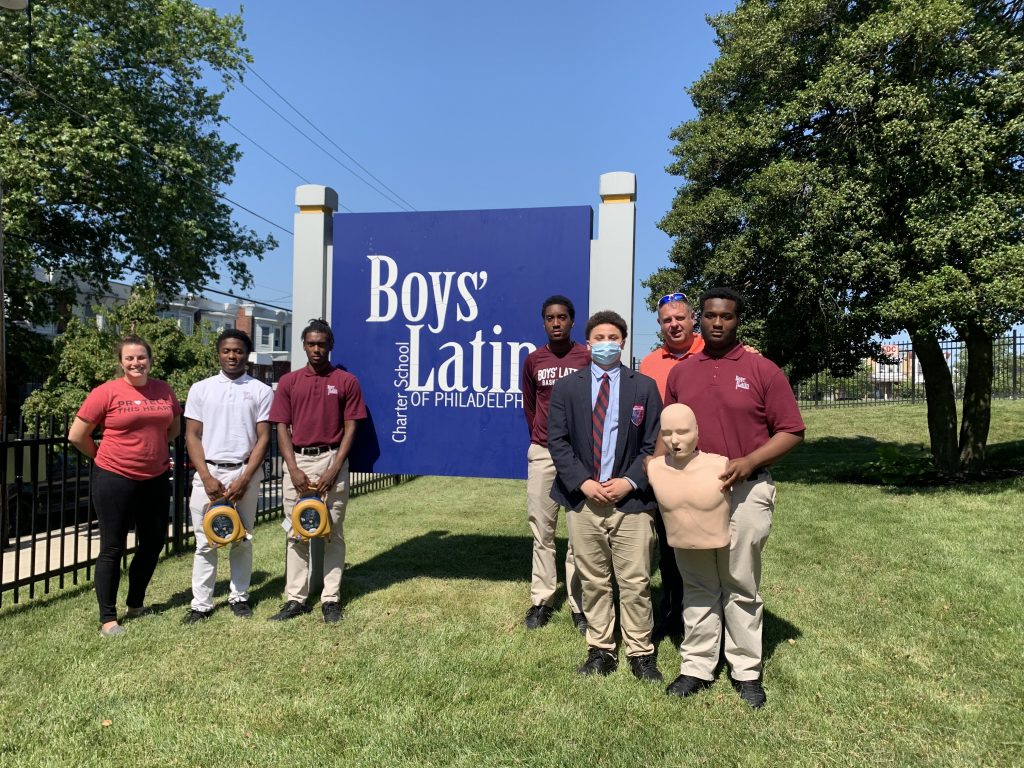Every second counts when a person experiences sudden cardiac arrest (SCA). During SCA, the heart stops beating unexpectedly, and the chance of survival decreases rapidly without immediate intervention. Automated External Defibrillators (AEDs) can be lifesaving in these critical moments. However, many people are unclear about the difference between an AED and a defibrillator. This page will clarify these terms and explain how these vital devices operate.

A defibrillator is a device that helps restore a normal heartbeat by sending an electric pulse or shock to the heart. It is used to correct arrhythmias, which are abnormal heartbeats. When the heart suddenly stops, this condition is called sudden cardiac arrest. Defibrillators can help restart the heart or make its rhythm more stable. There are several types of defibrillators used in different settings, and each type plays a crucial role in saving lives.

Manual defibrillators are used by trained medical professionals in hospitals and ambulances. These devices require the user to read the heart’s rhythm and decide the right amount of shock to deliver. The process needs a skilled operator because they must interpret the heart's electrical activity accurately.

Implantable cardioverter-defibrillators (ICDs) are small devices placed inside a person’s chest or abdomen. They continuously monitor the heart’s rhythm and deliver shocks automatically when they detect dangerous arrhythmias. ICDs are essential for patients with a high risk of sudden cardiac arrest.

Wearable cardioverter-defibrillators (WCDs) are worn outside the body. They have sensors that detect abnormal heart rhythms and deliver shocks to restore normal rhythm. WCDs are typically used temporarily while patients are waiting for an ICD or as a short-term solution for those at risk of sudden cardiac arrest.

To the question "how does an AED differ from a defibrillator," an AED, or Automatic External Defibrillator, is simply a portable type of defibrillator designed for use by the general public. AEDs analyze the heart’s rhythm and provide voice instructions to guide the user through the process. They are easy to use and can be found in many public places. AEDs play a vital role in emergencies outside of medical settings. We'll cover AEDs in more detail in the next sections.
An Automatic External Defibrillator (AED) is a portable device that checks the heart’s rhythm and can send an electric shock to the heart to try to restore a normal rhythm. AEDs are used to help people experiencing sudden cardiac arrest. They are designed to be simple to use, with clear voice prompts and instructions. This makes them accessible to the general public, not just medical professionals. AEDs are found in many public places such as schools, airports, and shopping centers. They play a crucial role in increasing the survival rates of sudden cardiac arrest victims.
AEDs are designed for use in emergencies by anyone, even without medical training. You should use an AED when someone suddenly collapses and is unresponsive, which may indicate sudden cardiac arrest. The device will guide you through each step, from checking the person's condition to delivering a shock if needed. AEDs are often located in public places where many people gather, such as schools, airports, and sports arenas, making them accessible in critical situations.
Manual defibrillators are typically used in hospitals or by emergency medical responders. These devices require professional training to operate because they involve interpreting the heart's rhythm and manually setting the shock level. Manual defibrillators are suitable for use by doctors, nurses, or paramedics who have the expertise to understand complex cardiac rhythms and decide the appropriate treatment. They are essential in clinical settings where a more detailed analysis of the heart's condition is necessary.

Sudden cardiac arrest (SCA) happens when the heart suddenly stops beating. This can occur without warning and often leads to death if not treated immediately. SCA is different from a heart attack, which is often caused by a blockage that stops blood flow to the heart. SCA disrupts the heart’s electrical system, causing the heart to stop pumping blood to the body and brain.
Several factors can lead to sudden cardiac arrest. Heart disease is a major risk factor, including conditions like coronary artery disease and heart attacks. Other causes include electrical abnormalities in the heart, severe physical stress, and inherited disorders. Lifestyle factors like smoking, obesity, high blood pressure, and lack of exercise also increase the risk.
The "chain of survival" is a concept that outlines the critical steps needed to save someone from sudden cardiac arrest. These steps include recognizing the emergency, calling for help, starting CPR, using an AED, and providing advanced care. Each link in the chain is vital, and AEDs play a crucial role in restoring the heart’s rhythm quickly. Immediate use of an AED can double or triple the chances of survival.
Before placing an AED in a school or organization, it's important to conduct a risk assessment. This involves evaluating the number of people in the area, their ages, and any known health conditions. Places with high foot traffic or where physical activity occurs, like gyms and sports fields, have a higher risk of sudden cardiac arrest incidents. Identifying these high-risk areas helps justify the need for an AED, ensuring it is readily accessible in an emergency.
Acquiring an AED involves costs, including the purchase price and ongoing maintenance. Schools and organizations often need to budget for these expenses. Grants and donations can help cover costs. Some local governments and health organizations offer funding programs for AEDs. It's also beneficial to involve the community in fundraising efforts. Explaining the importance of AEDs and how they save lives can encourage donations and support.
GotAED is an online crowdfunding platform that helps schools and organizations raise funds for AEDs. By creating a campaign on GotAED, schools can reach out to parents, local businesses, and the community for support. The platform makes it easy to share the campaign through social media and email, increasing visibility and engagement. GotAED provides resources and guidance to ensure successful fundraising, helping place AEDs in areas where they are needed most. This ensures that children and staff are safer in environments where they spend much of their time.
A defibrillator is a general term for any device that delivers an electric shock to the heart to restore normal rhythm. An AED, or Automatic External Defibrillator, is a type of defibrillator that is portable and designed for use by the general public. AEDs are easy to use and provide voice prompts to guide the user.
An AED works by analyzing the heart’s rhythm and determining if a shock is needed. If it detects a problem, it prompts the user to deliver a shock through electrode pads placed on the person’s chest. The shock can help the heart re-establish an effective rhythm.
Anyone can use an AED. The device is designed to be user-friendly and provides step-by-step instructions. While training is helpful and can increase confidence, it is not required. The AED will guide you through the process, so even without training, you can help save a life.
Requirements for AEDs in schools and public places vary by location. Some states and countries have laws mandating AEDs in certain settings, such as schools, gyms, and large public venues. Even where not required by law, having AEDs in these places is strongly recommended to enhance safety and readiness for cardiac emergencies.
Yes, AEDs can be used on infants and children. Most AEDs have special pediatric pads or settings to adjust the shock level for younger patients. It’s important to follow the device’s instructions and use the pediatric mode if available.
Yes, it is safe to use an AED on a pregnant person. The priority is to save the life of the mother, which in turn increases the chances of survival for the baby. The shock from an AED will not harm the baby.
The cost of an AED can vary, typically ranging from $1,400 to $2,500. Additional costs may include maintenance, replacement pads, and batteries.
GotAED is a crowdfunding platform designed to help schools, youth groups, and organizations raise money for AEDs. By creating a campaign on GotAED, groups can reach out to their communities for donations. The platform provides tools and resources to make fundraising easy and effective. With GotAED, more schools and organizations can afford AEDs, ensuring they are prepared for cardiac emergencies.
